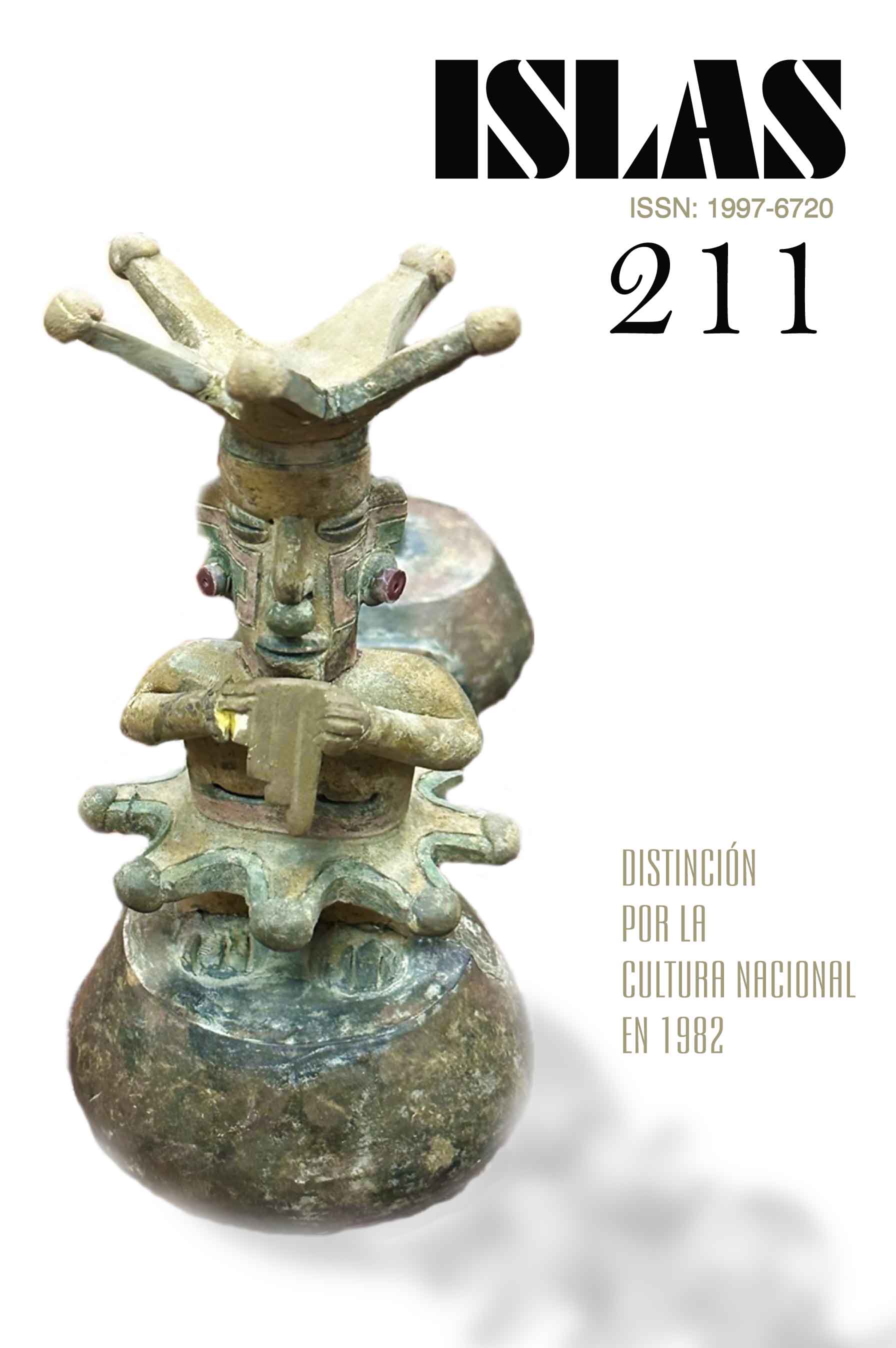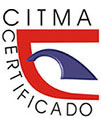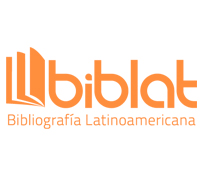Muralismo comunitario en Ecuador como experiencia artística referencial de un proceso creativo colaborativo
Palabras clave:
creatividad colaborativa, muralismo comunitario, experiencia artística referencial, Ecuador, participación comunitariaResumen
Introducción: Este artículo analiza el proceso creativo colaborativo en la ejecución del mural de la Escuela Ángela Rodríguez en la zona rural de Racar, parroquia Sinincay en la ciudad de Cuenca, explorando su impacto en la comunidad y en la educación artística.
Métodos: Se utilizó una metodología cualitativa basada en la observación participante, entrevistas y análisis documental, recopilando experiencias de los involucrados en el proceso.
Resultados: Se identificaron dinámicas de cocreación que fortalecieron la identidad local, el sentido de pertenencia y el aprendizaje colectivo.
Conclusiones: El arte colaborativo no solo transforma espacios físicos, sino que también fomenta el trabajo en equipo y el empoderamiento comunitario.
Descargas
Citas
ABRAHAM, A. (2023). Why the standard definition of creativity fails to capture the creative act. Qeios. https://doi.org/10.32388/LS88G9
BASTOS, F., & BLANDY, D. (EDS.). (2024). Promoting Civic Engagement Through Art Education: A Call to Action for Creative Educators. Taylor & Francis. https://doi.org/10.4324/9781003402015
BATES, B.R., GRIJALVA, D.A., JACHO, P.A., BARRIGA ABRIL, C.X., & GRIJALVA, M.J. (2021). Participatory mural painting and identifying resources in Asset Based Community Development research: a case in rural Ecuador. Qualitative Research Reports in Communication, 23(1), 56–66. https://doi.org/10.1080/17459435.2021.1940253
BAUMANN, S. E., MERANTE, M. M., SYLVAIN HOLMGREN, M. A., & BURKE, J. G. (2021). Exploring community art and its role in promoting health, social cohesion, and community resilience in the aftermath of the 2015 Nepal earthquake. Health Promotion Practice, 22(1), 65–77. https://doi.org/10.1177/1524839921996083
BETANCOURT MOREJÓN, J. (2005). Creatividad en la educación: Educar para transformar. En GÓMEZ CUMPA, J. (Ed.), Desarrollo de la creatividad (pp. 128-133). Fondo Editorial FACHSE – UNPRG. Universidad Pedro Ruiz Gallo.
CARERI, F. (2016). Pasear, detenerse. Editorial Gustavo Gili.
CARERI, F. (2014). Walkscapes. El andar como práctica estética. Editorial Gustavo Gili.
CASILLAS M. Á. (2005). Aspectos importantes de la creatividad para trabajar en el aula. En GÓMEZ CUMPA, J. (Ed.), Desarrollo de la creatividad (pp. 148-154). Fondo Editorial FACHSE – UNPRG. Universidad Pedro Ruiz Gallo.
DE BONO, E. (1988). Seis sombreros para pensar. Ediciones Juan Granica.
ELISONDO, R. (2023). Escrituras creativas en la universidad. Algunas ideas, experiencias e indisciplinas. Ñawi: arte diseño comunicación, 7(1), 173-193. https://doi.org/10.37785/nw.v7n1.a9
ESQUIVIAS, M.T. (2004). Creatividad: Definiciones, Antecedentes y Aportaciones. Revista Digital Universitaria, 5(1), 1-17.
FERNÁNDEZ, J.S., & NICHOLS, L.A. (2025). Mosaicos de la Comunidad (Mosaics of the Community): Community Engaged Participatory Muraling with Madres Emprendedoras. Social Sciences, 14(1). https://doi.org/10.3390/socsci14010025
GUILERA, L. (2011). Anatomía de la creatividad. Design Knowledge & Future. FUNDIT - Escola Superior de Disseny ESDi.
KLAUFUS, C. (2009). Construir la Ciudad Andina Planificación y Autoconstrucción en Riobamba y Cuenca. Abya-Yala/FLACSO.
LÓPEZ MARÍN, M. (2005). Creatividad. Definición, técnicas y medida. En GÓMEZ CUMPA, J. (Ed.), Desarrollo de la creatividad (pp. 174-177). Fondo Editorial FACHSE – UNPRG. Universidad Pedro Ruiz Gallo.
LI, N., XIE, J., NGUYEN, H.A., CAI, J., & CARROLL, J.M. (2024). Citizen Art: A Creative Mural Project for Community Building. The Journal of Community Informatics, 20(1). https://doi.org/10.15353/joci.v20i1.5566
LÓPEZ MARÍN, M. (2005). Creatividad. Definición, técnicas y medida. En GÓMEZ CUMPA, J. (ED.), Desarrollo de la creatividad (pp. 174-177). Fondo Editorial FACHSE – UNPRG. Universidad Pedro Ruiz Gallo.
MARTÍNEZ CARAZO,E. M., SANTAMARINA CAMPOS,V., DE MIGUEL MOLINA,M. (2021). Creative mural landscapes, building communities and resilience in Uruguayan tourism. Sustainability, 13(11), 5953. https://doi.org/10.3390/su13115953
MITJÁNS MARTÍNEZ, A. (2013). Aprendizaje creativo: desafíos para la práctica pedagógica. CS, (11), 311-341. Universidad ICESI.
MONS, S., F. X. OYARZUN, C. MARTÍNEZ, G. G. TREMBLAY, S. GELCICH, L. FARÍAS, P. ROMERO, V. MANRÍQUEZ, C. SEPÚLVEDA, M. BONET, N. F., GUERRERO, S. INZUNZA, A. FARÍAS. (2025). Positioning blue justice at local scales: insights for transdisciplinarity through art-science integration. Ecology and Society 30(1): 35. https://doi.org/10.5751/ES-15852-300135
OPPERT, M. L., O’KEEFFE, V., BENSNES, M. S., GRECU, A. L., & CROPLEY, D. H. (2023). The value of creativity: A scoping review. Journal of Creativity, 33, 100059. https://doi.org/10.1016/j.yjoc.2023.100059
ORTIZ OCAÑA, A. L. (2005). ¿Quién ha matado mi creatividad pedagógica? En GÓMEZ CUMPA, J. (Ed.), Desarrollo de la creatividad (pp. 134-147). Fondo Editorial FACHSE – UNPRG. Universidad Pedro Ruiz Gallo.
ORTIZ OCAÑA, A. L. (2005). Técnicas para el desarrollo de la creatividad. En GÓMEZ CUMPA, J. (Ed.), Desarrollo de la creatividad (pp. 182-196). Fondo Editorial FACHSE – UNPRG. Universidad Pedro Ruiz Gallo.
PETRONIENE, S., & JUZELENIENE, S. (2022). Community Engagement via Mural Art to Foster a Sustainable Urban Environment. Sustainability, 14(16), 10063. https://doi.org/10.3390/su141610063
SAWYER, K. (2006). Explaining creativity: The science of human innovation. Oxford University Press.
SAWYER, K. (2007). Group Genius. The Creative Power of Collaboration. Basic Books.
Publicado
Cómo citar
Número
Sección
Licencia
Derechos de autor 2025 Fabiola Virginia Rodas López, Juan Carlos Pañora Chacha

Esta obra está bajo una licencia internacional Creative Commons Atribución-NoComercial 4.0.
Usted es libre de:
Compartir — copiar y redistribuir el material en cualquier medio o formato
Adaptar — remezclar, transformar y construir a partir del material
La licenciante no puede revocar estas libertades en tanto usted siga los términos de la licencia
Bajo los siguientes términos:
Usted es libre de:
Atribución — Usted debe dar crédito de manera adecuada, brindar un enlace a la licencia, e indicar si se han realizado cambios. Puede hacerlo en cualquier forma razonable, pero no de forma tal que sugiera que usted o su uso tienen el apoyo de la licenciante.
NoComercial — Usted no puede hacer uso del material con propósitos comerciales.
No hay restricciones adicionales — No puede aplicar términos legales ni medidas tecnológicas que restrinjan legalmente a otras a hacer cualquier uso permitido por la licencia.












